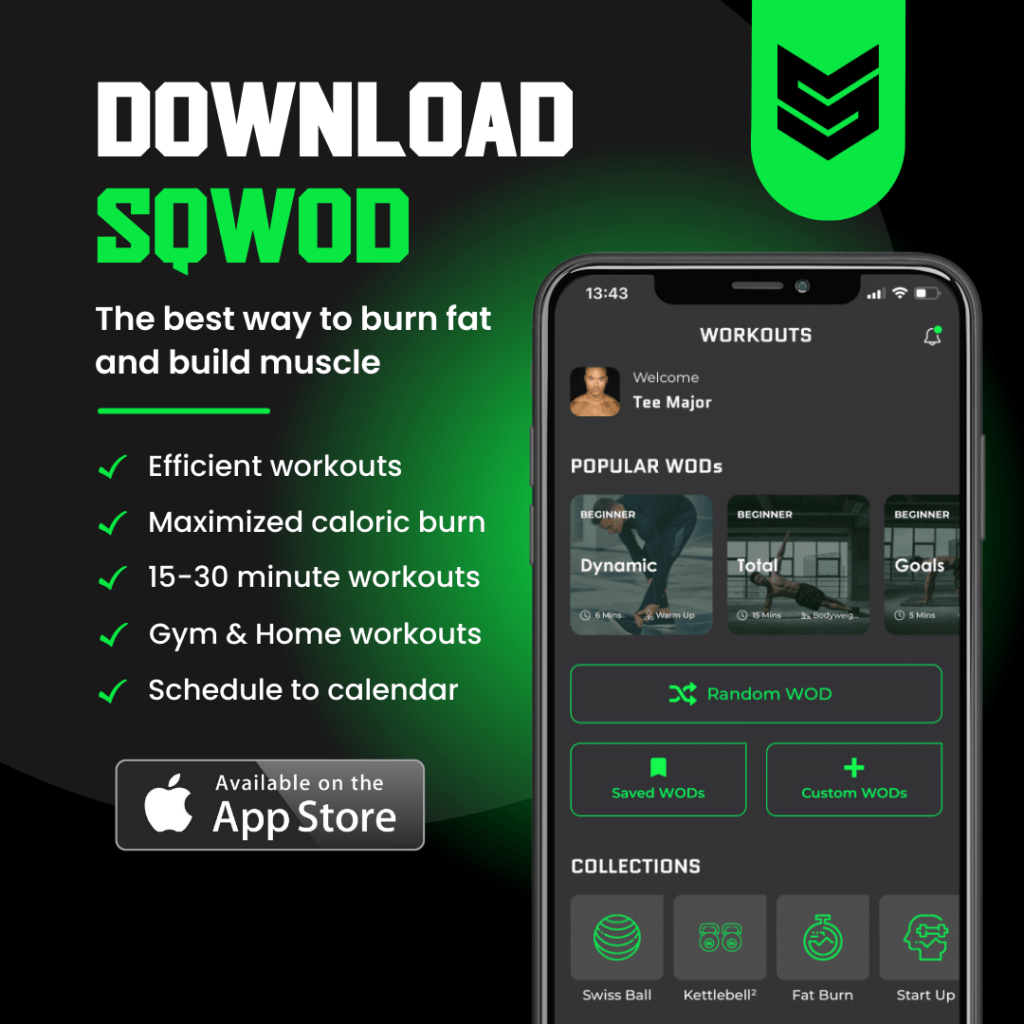Time is the most valuable commodity.
Whether you are a busy professional or a fitness pro, we all have to balance work, life, and workouts.
Every minute counts. So it’s crucial to make the most of your exercise routine for you and/or your clients.
If you’re looking to shed fat and gain muscle simultaneously, you’re not alone. These are two of the most common fitness goals, and they can be achieved efficiently with the right approach.
It’s called “body recomposition”.
Let’s break it down in plain terms.
A common misunderstanding is that body recomposition is (just) about weight loss. Not true. It’s about fat loss and lean muscle gain.
Ever heard the old saying, “muscle weighs more than fat”? Well, there’s some truth to it. Muscle is just more dense.
So, when you’re on a body recomposition journey, forget about fixating on the number on the scale. Instead, keep an eye on the mirror. You’ll likely start noticing stuff like muscle definition and your clothes fitting differently.
This normally messes with people’s heads. How can you be the same weight but feel and look so differently?
For example, in the top photo, I was at the beginning of my recomp, and you can’t see any definition in my abs. Just a few weeks later, and at the same body weight, the abs are starting to show.

How to approach body recomposition:
Step 1. Balance your nutrition
Calculate your Total Daily Energy Expenditure (TDEE) which is the total number of calories your body needs to maintain its current weight. (I show you how to do this at the end of this article in the FAQs.)
A slight caloric deficit (consuming fewer calories than your TDEE) is typically used for fat loss, but it should not be too aggressive to preserve muscle mass.
Make sure you have a balanced intake of macronutrients – protein, carbohydrates, and fats. Protein is crucial for muscle repair and growth.
Consider spreading your meals throughout the day, including pre and post-workout nutrition.
Step 2. Strength training and cardio
Incorporate short bursts of high-intensity exercise followed by brief periods of rest. This can be effective for both fat loss and cardiovascular fitness.
Focus on compound exercises like squats, deadlifts, kettlebell swings, etc., and aim to gradually increase the weight or resistance over time. This is called “progressive overload”.
Aim for at least 3-4 strength training sessions per week, targeting different muscle groups.
Again, the sessions don’t have to be long to get results. If you only have 15 minutes, use it.
Incorporate a variety of exercises to stimulate different muscle fibers.
Step 3. Rest and Recovery
Getting enough quality sleep is essential for muscle recovery and overall well-being.
Incorporate light activities like walking or yoga on rest days to aid in recovery.
Step 4. Hydration and Supplementation
Most people walk around all day dehydrated and don’t even know it.
"I think if most people focused more on hydration and movement, they would find they have […] 2-4x more energy than if they focused on caloric energy and what to eat." – @hubermanlab
Read that again pic.twitter.com/IG4Sd4ulnv
— Huberman Protocols (not Andrew Huberman) (@hubermanrules) October 11, 2023
Stay adequately hydrated, as it plays a crucial role in all bodily functions, including metabolism.
Consider taking a few supplements like protein powder, branched-chain amino acids (BCAAs), and omega-3 fatty acids if needed, but prioritize whole foods whenever possible.
Step 5. Consistency and Patience
Body recomposition is a gradual process and you may not see the results instantly. Just stay consistent with your nutrition and workouts. Trust the process.
Getting started with fitness?
Here's where the focus should be:
– Reliable sources of information
– Experimenting with different workouts
– Consistency and patience with your progressThe little stuff that makes all the difference.
— Tee Major (@Tee_Major) October 8, 2023
Step 6. Monitoring and Adjustments
Keep records of your workouts, measurements, and photos to monitor changes over time.
Make changes to your caloric intake or workouts as you go. For instance, if fat loss stalls consider a slight reduction in calories.
Remember, every body is different, so it’s essential to listen to yours and make adjustments accordingly.
Why HIRT is Perfect for Body Recomposition
HIRT combines the best of both worlds: high-intensity cardio with resistance training. It’s fast-paced for busy people, and it incorporates weights and bodyweight exercises (for those who like to train without equipment). HIRT engages multiple muscle groups while keeping your heart rate elevated.
Here are some reasons it is so effective:
-
Efficiency: With HIRT, you get the benefits of both strength training and cardio in one session. This means you can achieve more in less time.
-
Maximized Caloric Burn: The intensity of HIRT keeps your metabolism revved up even after the workout is done. You’ll continue to burn calories throughout the day.
-
No Need for Lengthy Workouts: HIRT workouts are designed to be time-efficient, making them perfect for busy schedules.
-
Adaptability: Whether you’re at the gym or working out at home, HIRT can be tailored to suit your surroundings and available equipment.
Common mistakes people make when attempting to achieve body recomposition:
1. Doing too much cardio:
Mistake: Relying heavily on long-duration cardio without incorporating sufficient strength training.
Why it’s a Mistake: Cardio alone may lead to muscle loss, which can hinder the goal of gaining muscle while losing fat.
2. Excessive calorie restriction:
Mistake: Overly restricting your diet with very low-calorie intake.
Why it’s a Mistake: Severely restricting calories can lead to muscle loss and a slower metabolism, making it harder to achieve and maintain body recomposition.
3. Not eating enough protein:
Mistake: Not consuming enough protein to support muscle growth and repair.
Why it’s a Mistake: Protein is crucial for preserving and building muscle mass. Insufficient protein intake can hinder progress.
4. Not staying consistent:
Mistake: Inconsistency in diet and exercise routines.
Why it’s a Mistake: Achieving body recomposition requires consistent effort over time. Inconsistent habits can lead to suboptimal results.
5. Ignoring recovery:
Mistake: Neglecting rest, sleep, and recovery techniques.
Why it’s a Mistake: Recovery is essential for muscle repair and growth. Inadequate rest can lead to overtraining and hinder progress.
6. Obsessing over the scale:
Mistake: Placing too much emphasis on the number on the scale.
Why it’s a Mistake: Body recomposition may not always result in significant changes in scale weight because muscle gain can offset fat loss.
Monitoring other metrics like body measurements and photos is way more important.
7. Not making adjustments when it’s needed:
Mistake: Failing to make necessary adjustments to diet and exercise routines based on progress.
Why it’s a Mistake: Your body’s response to diet and exercise may change over time. Failure to adapt can lead to plateaus.
8. Not setting goals:
Mistake: Not setting clear, realistic goals for body recomposition can slow down your progress.
Why it’s a Mistake: Without specific goals, it’s harder to track progress and make necessary adjustments.
9. Not following the “progressive overload” protocol:
Mistake: Not consistently challenging muscles with increased resistance or weight.
Why it’s a Mistake: Progressive overload is crucial for muscle growth.
Sticking to the same weights or resistance levels will lead to a plateau.
10. Relying too heavily on supplements:
Mistake: Depending on supplements as a primary source of nutrition.
Why it’s a Mistake: While supplements can be beneficial, they should complement a well-balanced diet, not replace it.
How to get bigger, faster, and stronger as an athlete:
🏋️Train🍳Eat breakfast
💊3-5 g of creatine
💦Drink 80-100 oz fluid
💤Sleep 7-9 hours nightly
🍌Eat a post-workout meal
🥩Prioritize real food over supplements
🍠Eat enough calories to support daily energy & training
— Wendi A. Irlbeck MS, RDN, LD, CISSN (@Wendi_Irlbeck) January 7, 2023
Avoiding these common mistakes and adopting a balanced, sustainable approach can greatly improve the chances of successfully achieving body recomposition.
FAQs
Q1: How can I effectively calculate my Total Daily Energy Expenditure (TDEE)?
Calculating your TDEE involves determining the total number of calories your body burns in a day, taking into account your basal metabolic rate (BMR) and activity level.
You can use the following steps:
1. Calculate Basal Metabolic Rate (BMR): This is the number of calories your body needs at rest. The Mifflin-St Jeor Equation is commonly used for this:
– For men: BMR = 88.362 + (13.397 × weight in kg) + (4.799 × height in cm) – (5.677 × age in years)
– For women: BMR = 447.593 + (9.247 × weight in kg) + (3.098 × height in cm) – (4.330 × age in years)
2. Factor in Activity Level:
– Sedentary (little or no exercise): BMR x 1.2
– Lightly active (light exercise/sports 1-3 days/week): BMR x 1.375
– Moderately active (moderate exercise/sports 3-5 days/week): BMR x 1.55
– Very active (hard exercise/sports 6-7 days a week): BMR x 1.725
– Extra active (very hard exercise/sports, physical job): BMR x 1.9
3. Adjust for Goals:
– For fat loss, create a slight caloric deficit by consuming fewer calories than your TDEE. A deficit of 300-500 calories per day is a common starting point.
– For muscle gain, consider a slight caloric surplus (consuming more calories than your TDEE) to provide the extra energy needed for muscle growth.
Q2: Can you recommend any advanced techniques or technologies that can enhance the body recomposition process?
Certainly, here are some advanced techniques and technologies to consider:
1. Periodization: Implementing periodization in your training plan involves varying the intensity and volume of your workouts over time. This can optimize muscle growth and fat loss.
2. Body Composition Analysis: Technologies like DEXA scans, Bod Pod, or bioelectrical impedance scales can provide detailed information about your body fat percentage, lean muscle mass, and bone density.
3. Nutrient Timing: Strategic timing of meals and nutrients around workouts can optimize muscle growth and recovery. This may involve pre and post-workout nutrition.
4. Advanced Training Methods: Techniques like drop sets, supersets, and rest-pause sets can help break plateaus and stimulate muscle growth.
5. Wearable Fitness Tech: Devices like fitness trackers and smartwatches can monitor your activity levels, heart rate, and sleep quality, providing valuable data for optimizing your training and recovery.
Remember, while these advanced techniques can be effective, they should be implemented with care and ideally under the guidance of a qualified fitness professional.
For sources and more information, feel free to ask.
Thanks for reading.
Over the last decade, Tee Major has worked with top fitness brands such as Nike, Puma, Reebok, and Adidas as a fitness model. As a strength & conditioning coach, he trained Olympians, NFL, NCAA, the USMC, Army, USAF, SOCOM. As an entrepreneur, he authored Urban Calisthenics in 2018 with Penguin Random House. He runs a company called, Sqwod which creates products and services to help fitness creators build run, and scale fitness brands.


